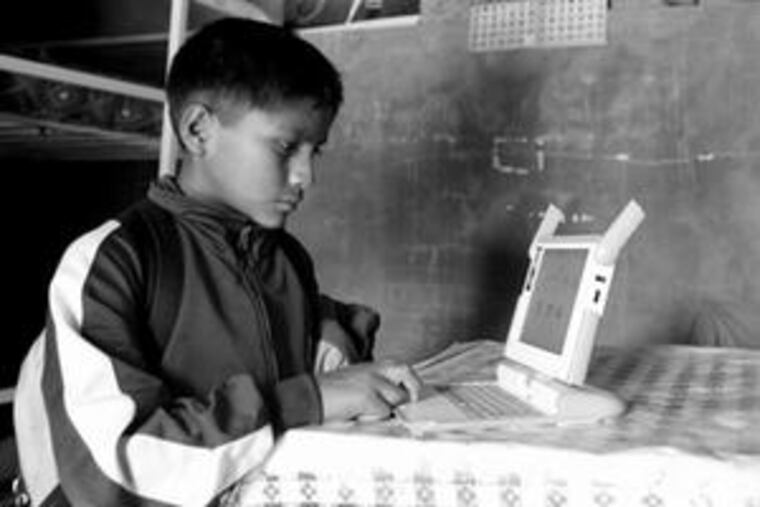A bundle of joy in laptops
ARAHUAY, Peru - Doubts about whether poor, rural children really can benefit from quirky little computers evaporate quickly in this hilltop Andean village, where 50 primary-school children got machines from the One Laptop Per Child project six months ago.

ARAHUAY, Peru - Doubts about whether poor, rural children really can benefit from quirky little computers evaporate quickly in this hilltop Andean village, where 50 primary-school children got machines from the One Laptop Per Child project six months ago.
These offspring of peasant families whose monthly earnings rarely exceed the cost of one of the $188 laptops cannot get enough of their "XO" laptops.
At breakfast, they are already powering up the combination library/videocam/audio recorder/music-maker/drawing kits. At night, they are dozing off in front of them - if they have managed to keep older siblings from waylaying the machines.
"It's really the kind of conditions that we designed for," said Walter Bender, president of the Massachusetts Institute of Technology spin-off.
Founded in 2005 by former MIT Media Lab director Nicholas Negroponte, the One Laptop program has retreated from early boasts that developing-world governments would snap up millions of the pint-size laptops at $100 each. In a backhanded tribute, One Laptop now faces homegrown competitors everywhere from Brazil to India - and a full-court press from Intel Corp.'s more power-hungry Classmate.
But no competitor approaches the XO in innovation. It is hard-drive-free, runs on the Linux operating system, and stretches wireless networks with "mesh" technology that lets each computer in a village relay data to the others.
Mass production began last month, and Negroponte says he expects at least 1.5 million machines to be sold by next November. Even that would be far fewer than Negroponte originally envisioned. The higher-than-initially-advertised price and the lack of a Windows operating system, still being tested for the XO, have dissuaded many potential government buyers.
Peru made the single biggest order to date - more than 272,000 machines - in its quest to turn around a primary education system that the World Economic Forum recently ranked last among 131 countries surveyed. Uruguay was the No. 2 buyer of the laptops, signing a contract for 100,000.
The children of Arahuay prove One Laptop's transformative conceit: that you can revolutionize education and democratize the Internet by giving a simple, durable, power-stingy but feature-packed laptop to the world's poorest children.
"Some tell me that they don't want to be like their parents, working in the fields," first-grade teacher Erica Velasco said of her pupils.
Antony, 12, wants to become an accountant.
Alex, 7, aspires to be a lawyer.
Kevin, 9, wants to play trumpet.
Saida, 10, is already a promising videographer, judging from her artful recording of the town's recent Fiesta de la Virgen.
Arahuay's lone industry is agriculture. Many adults share only weekends with their children, spending the workweek in fields many hours' walk from town and relying on charities to help keep their families nourished.
When they finish school, young people tend to abandon the village. Peru's head of educational technology, Oscar Becerra, is betting the One Laptop program can reverse this rural exodus to the squalor of Lima's shantytowns four hours away.
Indeed, Arahuay's elementary school population rose by 10 when families learned the laptop pilot was coming, said Guillermo Lazo, the school's director.
The XOs that Peru is buying will be distributed to pupils in 9,000 elementary schools from the Pacific to the Amazon basin, where a single teacher serves all grades, Becerra said.
Although Peru boasts thousands of rural satellite downlinks that provide Internet access, only about 4,000 of the schools getting XOs will be connected, Becerra said.
Negroponte said One Laptop was committed to helping Peru overcome that hurdle. Without Internet access, he said, the program is incomplete.